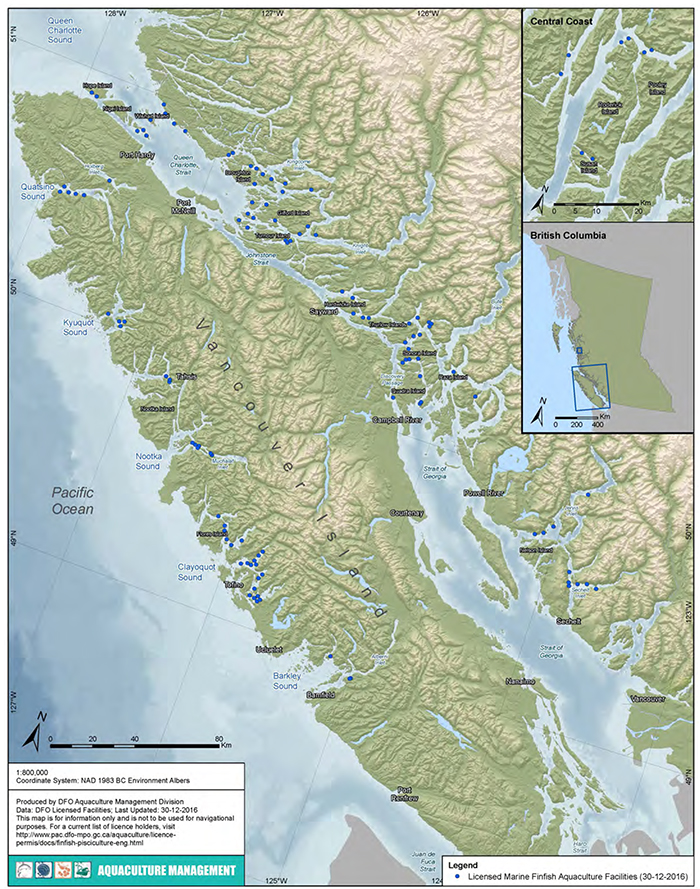Archived – Regulating and monitoring British Columbia’s marine finfish aquaculture facilities 2015–2016
Table of Contents
- Summary of marine finfish aquaculture in British Columbia
- How aquaculture facilities are regulated
- Assessing compliance
- Reporting requirements and reports submitted
- Monitoring and audits: Fish health
- Monitoring and audits: Environmental
- Monitoring and audits: Inventory and aquaculture statistics
- Summary
Purpose
This report, Regulating and Monitoring British Columbia’s Marine Finfish Aquaculture Facilities 2015-2016, provides an overview of the marine finfish aquaculture industry’s performance in meeting the regulatory requirements under the Pacific Aquaculture Regulations and the Aquaculture Activities Regulations. Regulating and Monitoring British Columbia’s Marine Finfish Aquaculture Facilities 2015-2016 follows the earlier publication of the same report, which provided an overview of compliance from 2011-2014. DFO aims to produce this publication on an annual basis to increase information available on the industry’s performance in meeting conditions of licence and on DFO’s monitoring activities, as part of the Department’s commitment to ensuring a sustainable, world-class aquaculture industry in Canada. All data presented in this document is accurate to the best of our knowledge at the time of publishing. Information presented on the Department’s public reporting web pages are updated as new information is received and may differ from this report.
Summary of marine finfish aquaculture in British Columbia
In British Columbia, the aquaculture industry is primarily regulated and managed by Fisheries and Oceans Canada (DFO). DFO began licensing aquaculture facilities in BC in December 2010. In 2015, there were 116 licensed marine finfish aquaculture facilities (“fish farms” or “(farm) sites”). In 2016, DFO approved three new operations for a total of 119 licensed farms; about half of these farms have fish on site at any given time. At the end of 2016 the approved total combined peak production of all marine finfish facilities was 297,099 metric tonnes (MT). A list of all current licence holders for marine finfish aquaculture is available on the DFO website: DFO website.
Marine finfish species cultivated in British Columbia
The majority of marine finfish aquaculture licences are issued for salmon, with Atlantic salmon (Salmo salar) and chinook salmon (Oncorhynchus tshawytscha) being the most commonly farmed fish in B.C. Some other species are also cultivated on a smaller scale, including sablefish/black cod (Anoplopoma fimbria) and coho salmon (Oncorhynchus kisutch).
Atlantic salmon is the preferred species for marine finfish cultivation around the world because these fish feed well on pellets, are efficient at converting food to body mass, grow quickly, and are well adapted to the confines of a net pen.
Locations of marine finfish aquaculture facilities
Marine finfish aquaculture facilities are mainly located around northern and western Vancouver Island. There are clusters of sites in several areas, such as Clayoquot Sound, the Port Hardy area, the Broughton Archipelago, and the Discovery Islands. All marine finfish aquaculture facilities with a valid licence on December 31, 2016 are shown in Figure 1.

- Date modified: